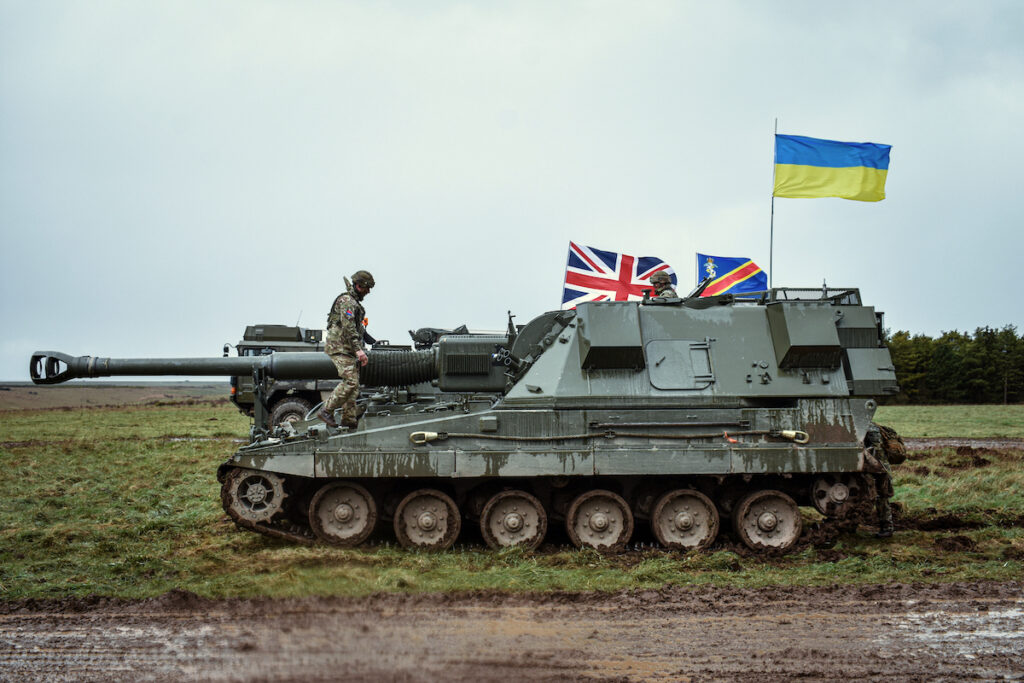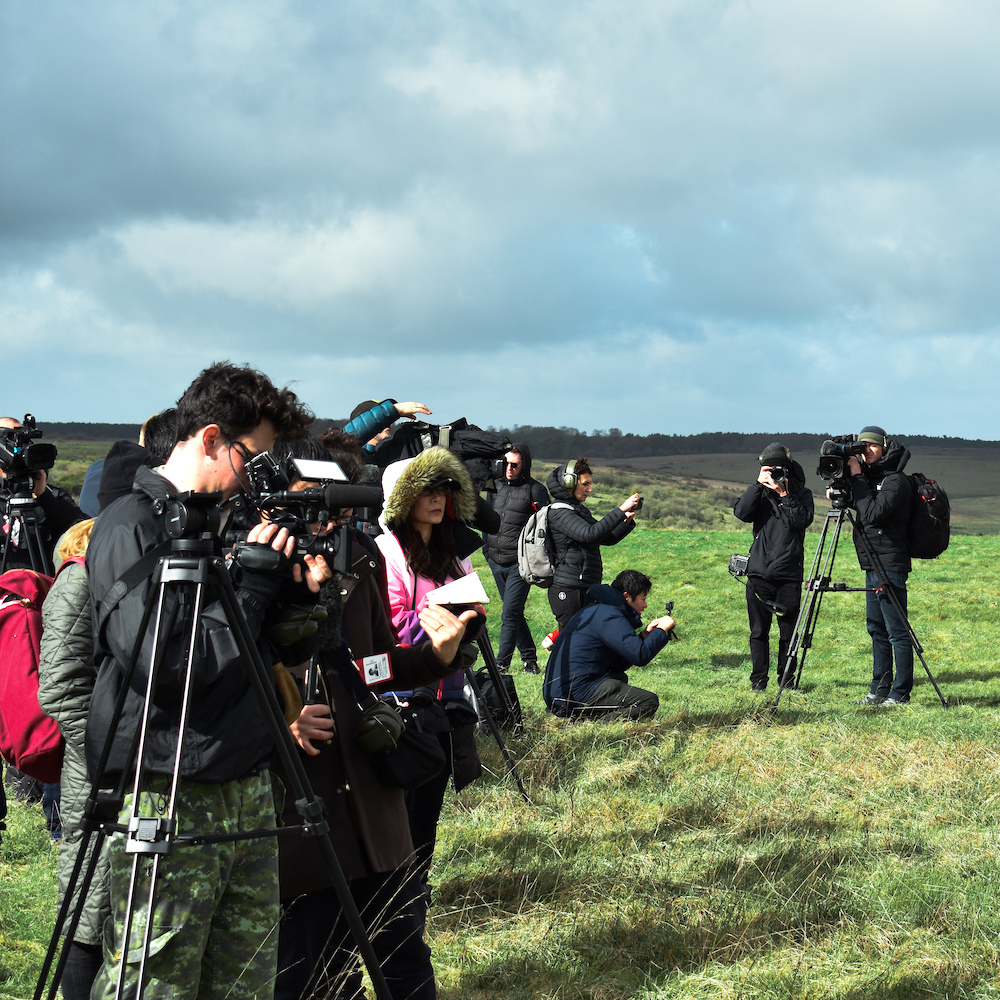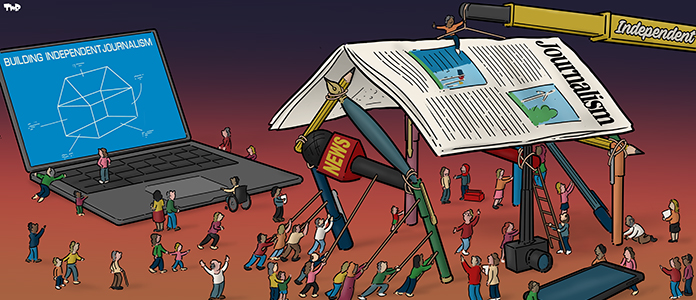The first cannon shots rang out at 9:55 a.m., just before a heavy downpour on the muddy field. On top of the AS-90 howitzers flutter Ukrainian flags, next to Union Jacks. Sergeant Burnfield grabs her walkie-talkie and orders the six artillery pieces to open fire. Almost fifty rounds are launched over the next half-hour. Thirty of these weapons will soon leave from London with the Ukrainians.
Britain's largest military training ground is an uninhabited zone 30 kilometres across. Sited 3,000 kilometres from Ukraine’s front line, covered by the tracks of military machinery, these flatlands of southwest England are usually veiled by military secrecy. The base is one of four where the British have trained more than 10,000 Ukrainian soldiers since the start of the conflict.

Mikhaylo, 33, is one such volunteer. The father of a four-year-old boy, he was a farm-machinery specialist in Ukraine's northern region of Chernihiv. His training started three weeks ago: "As soon as my town was liberated, I joined the army. I have to do my best to protect the motherland."
As a precaution against reprisals, the Ukrainians only show their eyes. The soldiers can be distinguished from the British instructors by the fact that their jackets have no camouflage.
Who are these trainees?
Of the 150 recruits present that day, half had already faced the horrors of the frontline. The choice of soldiers to be sent to the other side of Europe is a regular subject of interest.
According to Emmanuel Dupuy, president of the Institute for Prospective and European Security (IPSE), the training is mainly for cadets (apprentice officers). But senior Ukrainians are in the minority around the weapons at this site: most men are already intimately familiar with artillery. Yuriy has been at war since Russia's annexation of Crimea in 2014: "This training allows me to perfect my technique and to fire more accurately." The gun Yuriy practises on has a range of 25 kilometres.
London keeps a tight rein on communications

Eighteen journalists were present to watch the manoeuvres on this Friday morning in March. They had received their accreditation in just a few days, and the efficient logistics of the visit made it successful PR for the British Army. By contrast, similar EU-organised exercises remain highly secretive and closed to the press. In Emmanuel Dupuy's interpretation, "the corporate culture of the British armed forces has always been extremely communicative." He points to a habit of public diplomacy that the British have mastered perfectly.
That such training should take place on the western fringes of Europe has raised eyebrows, given that perfectly good sites are on offer in nearby Poland. Bringing thousands of Ukrainians to France, Germany or the UK entails complex and costly logistics.











